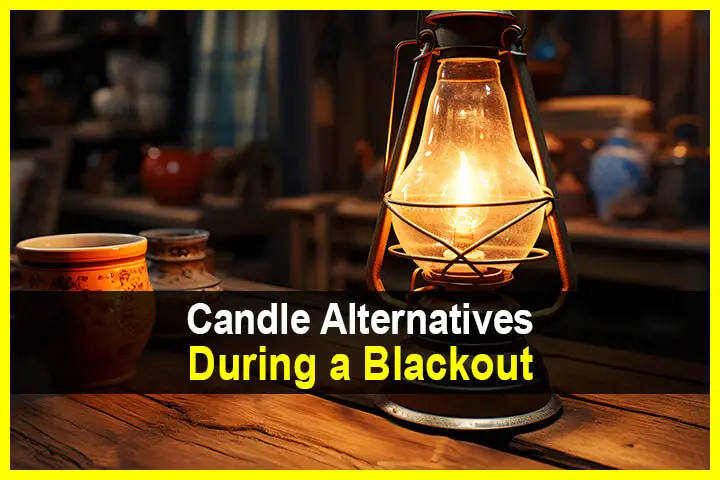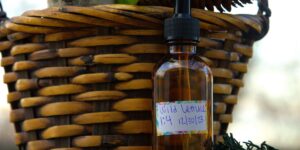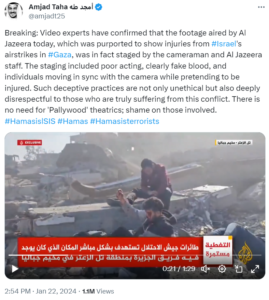Estimated reading time: 19 minutes
Candles are often the go-to lighting solution when the power is out – assuming of course you have enough candles to get through the night. A more significant concern is when a power outage goes beyond a few hours to days and even weeks. Even a good supply of candles will quickly diminish if the lights stay off.
Anyone who has endured a power outage of any duration knows how stressful the time can be, especially for children. There are all sorts of alternatives we have to improvise from cooking to sanitation but at night everything gets harder without light.
We’re going to explore a range of options from primitive to technological. Some require some preplanning and storage, but others you can improvise in an emergency in a number of surprising ways. We’ll also look at both indoor and outdoor lighting options.
Indoor alternatives don’t require an excessive amount of light, and most importantly you don’t want any fumes from an improvised light source. Emissions from a gas fueled lantern outdoors is less of an issue, and outdoor environments usually require a brighter light source to simply light up a larger area.
Want to save this post for later? Click Here to Pin It On Pinterest!
Indoor Lighting Options

Oil Lamps
This is one of the oldest ideas for lighting going back to ancient times. Oil lamps have been found in archaeological sites around the world, although the first Hurricane lamp was invented as recently as a couple of hundred years ago.
The principle is simple and the lamps are relatively inexpensive. A wick in a lower chamber or container is soaked in a fuel and emerges from an enclosed case that elevates a small section of the wicking material. Most have a globe or glass enclosure to isolate the flame from surrounding objects.
The wicks last a long time but many of these lamps require a certain size and shape of wicking so it’s wise to have some additional wicks in storage.

Extra wicking material will not only allow you to easily replace a wick but as we’ll demonstrate later, gives you a critical component for improvising a lamp or light source from found materials.
What’s important to remember about oil lamps is that they can burn a range of oils. The best oil is a specially made paraffin based lamp oil.

Paraffin lamp oil is a clear oil that burns clean with a minimal amount of fumes. It’s as safe as a candle in that regard. But in an emergency you can burn other types of oils successfully in an oil lamp.
The safest alternative oils are cooking oils.

Extra virgin olive oil is often mentioned as an oil lamp alternative fuel. It burns clean and any odors are no different than the faint aroma you have in the kitchen when frying or cooking anything in oil. The same is true for other oils.

If you don’t have olive oil on hand any cooking oil from vegetable oils to corn oil to seed oils like sunflower and safflower seed oil will work. The intensity of the flame may vary and might not be as bright as a paraffin oil, but in an emergency light is light.
Then again, any oil is worthless if you don’t happen to have an oil lamp on hand but there are surprising alternatives.
Ancient Oil Lamps

You can actually buy a re-creation of an ancient oil lamp and they work. The concept is a receptacle or container (usually made out of clay) with a wick emerging from a tip in the container.
The wick is immersed in a flammable oil and the tip of the wick is lit to create the flame. The light emitted is a bit more than a candle and they can burns for hours and even days depending on the amount of oil contained.
On a fundamental level they’re the simplest lighting solution and people used everything from whale oil to lard to keep them burning. They’re also easy to make and you don’t need clay or pottery skills.
Improvising an Oil Lamp
We’re going to use some found materials you may have around the house. In an emergency or when you run out of lighting options, this is a good way to keep some light in the night.
The first thing you need to find is a receptacle or container.

We’re going to start with a small jelly jar with a lid. Any jar with a lid will work and they not only work but are surprisingly efficient giving off light for hours.
You’ll also need wicking material.

Some of the best found wicking material is the rope-like strands of a mop. Make sure they’re clean and dry and cut one of the rope strands from the mop. You could also use other types of materials for wicks from shoelaces to yarn to any kind of cotton or hemp rope.
Avoid using any ropes or materials made from plastics, polyurethane or any other synthetic materials for a wick. They’ll fill your home will the smell of burning plastic and that’s not the idea.
The basic idea we’re trying to capture is defined by this photo:

You can buy one of these and all they are is a glass globe filled with some oils with a wick emerging from the top, but they demonstrate the concept. Here’s how we can apply that idea to our jelly jar and mop/wick.
- Start by punching a hole in the center of the jelly jar lid. You want to punch the hole from the inside of the lid. If the lid has a rubber gasket you want to remove it. If the lid heats up over time the rubber can melt a bit and give off fumes.
- The reason you punch the hole from inside the lid is because the hole- punch will have some amount of metal protruding up. This will help hold the wick in place and allow you to gently pull the wick up to the proper height when lighting, but prevent the wick from sliding down into the oil.
- Use a punch a little smaller in diameter than the wick so you have some friction to hold the wick in place. If you pull out too much of the wick, just trim some off the top. About 1/4 – inch of wick should protrude but you may need to experiment.
- Fill the jelly jar about 2/3’s full with your oil. We’ll get into all of the oil alternatives in a moment.
- Screw the lid onto the jar with enough wick descending to coil a bit at the bottom of the jar into the oil. Give the wick a little time to “wick” the oil up to the tip. In fact, lighting the wick will actually help to draw some oil up, so adding a bit of oil to the tip of the wick can get you started if you’re in a hurry.
- Keep an eye on your improvised oil lamp for a few minutes to make sure it’s burning and working properly and then place it in a safe place where the open flame won’t start a fire.
Alternative Oils
We already mentioned olive oil and other vegetable oils but many other household oils will work for an indoor oil lamp. Oils or fats that are used for cooking are best because there’s always that issue of odors and fumes.
Shortening
Crisco is a good alternative fuel source and many ideas for Crisco lamps have been explored.

It’s not a liquid so you’ll need to carefully spoon out the shortening into your jar and gently tamp it down to fill the jar. You’ll also need to dab some on the tip of the wick to get it started.
The heat from the flame heats the lid to help melt the Crisco so it can be drawn up into the wick. This is another reason you want to remove any type of rubber gasket from a lid before using a jar as a lamp.
If your shortening fails to sufficiently melt to allow the wicking action to work, just trim off the sides of the lid to remove the screw-top and place the remaining circle of metal directly on top of the Crisco. The hole in the metal will keep the wick and flame sufficiently clear of the shortening below but keep an eye on it. As the shortening heats up the top of the melted shortening could ignite.
Lard

Pork fat burns and lard is pork fat. You can buy lard in a can but even the drippings from a pork roast, ham and bacon can become the fuel for an oil lamp. Your house may smell like bacon but that’s not all bad and it will burn as well as shortening.
You may have to improvise the same trimming on your lid to get the metal of the lid in contact with the fat because it will congeal and harden with time.
And it’s not just about pork fat. Most any animal fat will burn including beef tallow, bear fat and even chicken fat. In an emergency you may have to use the animal fat that’s available, and our pioneer ancestors never hesitated to use what they had on hand if it worked.
3. Solar Lighting Options
Solar panels have been around for a while and more and more small and inexpensive lighting options have emerged using a small solar panel to recharge a battery for attached LED lights.

The larger units can be used to easily light a whole room and work outdoors as well. Most units are waterproof for outdoor use but they can also be used indoors.

Smaller solar lights can be used around the house in various rooms and some have double sided tape on the back so they can be easily mounted. The best location indoors is obviously by a window or door with a window where the sunlight can reach the solar panel to recharge.
If a location doesn’t have sunlight for a recharge you can always place them in the sun to recharge and then mount them at night.

In fact, there are solar lights specifically designed for outdoor use that can be recharged outside and easily brought inside at night.
You might need to build a small platform or holder for the light because the outdoor setup is a stake that’s pushed into the ground.

Just leave the stake in the ground ourside and pull off the top and place into your improvised holder and you can fill every room and hallway with safe, odor-free lighting. Best of all, these small outdoor solar lights are really cheap and seem to last a long time.
Another solar option is a dedicated solar lantern with a flashlight option.

These are specifically designed to be recharged in a sunny spot and the unit can pull up to act as a solar lamp, or switched to flashlight mode to be used as a flashlight.
Flashlights are always a good idea in a power outage and a solar rechargeable flashlight may be the best idea because it’s sustainable. Batteries in storage are a good idea, but anyone with kids knows how long batteries last in a flashlight. Solar rechargeable flashlights solve the battery problem.
There are even lighting options that have a hand crank to recharge the battery. That’s a really good idea when overcast days limit the amount of recharge you get from any solar light. Clouds still allow some UV light through to recharge a solar panel but not as much as direct and clear sunlight.

Better yet, many of these hand-cranked flashlights are part of a large component that includes a radio and the ability to recharge a cell phone with a USB port.

If you’re investing in solar flashlights have more than one on hand and try to get some of the solar flashlights with high lumens. That will really help outdoors and they usually have a switch that allows you to adjust the light intensity.

In fact, it may be wise to have a solar spotlight on hand if you’re stocking up on solar lights. These will flood an outdoor area with light and also have a range of settings.
4. Fueled Lanterns
Propane

Lanterns are another option but whether or not they can be used indoors has a lot to do with the fuel. Propane lanterns that run off of a small propane tank are one of the cleanest burning fueled lanterns, but even then some level of ventilation is usually recommended.
That’s easy in summer and a couple of open windows should supply sufficient ventilation, but in winter it may not be the best idea depending on how cold it is.
They also require a certain amount of stockpiling of extra propane cylinder and usually use mantles to burn the propane and create the light, so add extra mantles to your stockpile.
What’s good about them is that they provide high intensity light that’s great for outdoors. They can also be dimmed for use indoors. The only downside is the recommendation for some level of ventilation and when you’re out of propane cylinders or mantles –you’re out of luck.
Gas Fueled Lanterns

Another lantern option is fueled by gas. The gas is usually white gas but a better option is the dual-fuel lanterns that can burn either white gas or regular gas. They also require extra mantles for replacement.
These lanterns definitely need to be well ventilated and are best if used only outdoors. They can be used indoors briefly in an emergency but the fumes they give off are carbon monoxide and carbon dioxide so it’s best to only use the outdoors.
One idea is to hang the lantern from a roof eave outside of a window. The light will enter the window and light the room while the lantern burns outside. Just make sure the top of the lantern is not too close to the wooden eave because the heat emerging from the top of the lantern is intense. Use a small chain, cable or wire to suspend it and things should be okay.
Kerosene Lanterns

This is another step back to the past. Kerosene lanterns were largely used by railroads and quickly found their way to farm and homesteads. Kerosene is not as flammable as gas, but it’s a petroleum derivative and still gives off a certain amount of carbon dioxide. As a result, they should also be used only in a ventilated area indoors and are best used outside.
They’re very durable lanterns and unlike gas lanterns that require a delicate mantle for light, use a conventional wick for the flame. They don’t burn as bright as a gas fueled lantern but some burn brighter than some of the oil lamps we covered.
They’re also relatively inexpensive compared to gas fueled lanterns but require some kerosene and wicks in storage to keep the flame burning over time.
More Resources
Here are some links to other articles and videos that cover some alternatives to lighting.
Which Alternative is Best?
Solar options offer the most advantages mostly due to their sustainability (they only need free sunlight to recharge) and the fact that they don’t give off any fumes. The intensity of the light is another advantage in some models and they are much safer without any flames or fuels that can lead to a fire.
The only downside is that an overcast day will not recharge them as well as a sunny day; they need to be purchased in advance rather than improvised in an emergency, and eventually can break or stop working over time.
Oil lamps come in second because they can be easily improvised and can burn a range of oils from paraffin oils to vegetable oils and animal fats.
The downside is that the oils give off a certain degree of fumes, some give off odors, and an open flame is always a danger.
Kerosene lanterns come in third because they are sturdy, reliable and contain the flame. They also give off a fair amount of light.
The downside is that they require ventilation indoors, need a stockpile of kerosene and eventually wick replacement, and are still a fire hazard if placed close to or underneath flammable materials or knocked over. Just ask Mrs. O’Leary’s cow.
Gas Fueled lanterns come in last simply because they give off a good amount of carbon dioxide. They also burn very hot and need to be well isolated from flammable materials, and never touched except by the handle.
The good news is that they are a great lighting alternative outdoors because of the bright, intensity of their light. Dual-fuel gas lanterns are best because regular gas can even be siphoned from a car or lawn mower to keep them burning in an emergency, cut in the long-term are not as sustainable as solar if for any reason the availability of gas becomes a problem.
The Best Solution
Combine your options. Take the time to store or stockpile some lighting alternatives. This would include solar options, oil lamps and any of the other possibilities we’ve covered. This will give you a range of alternatives to always keep the lights on. And while you’re at it, maybe add an extra box or two of candles to that emergency lighting stockpile.
Like this post? Don’t Forget to Pin It On Pinterest!


















